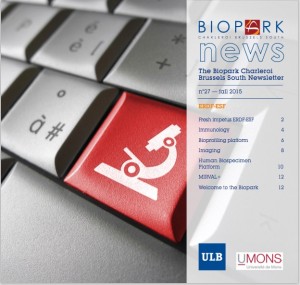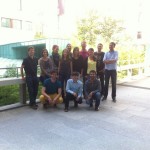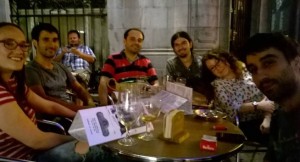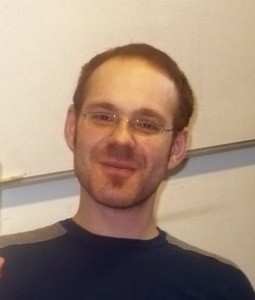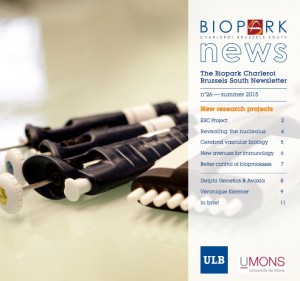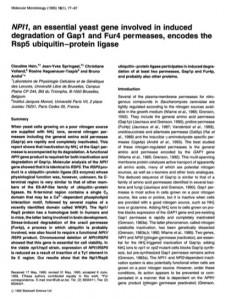We are pleased to welcome a new pregraduate student, Martin Van Vlasselaer, who will carry out his master thesis in the lab. During his thesis, Martin will use yeast as a model system to address specific questions relevant for the study of cystinosis, a rare genetic disease caused by mutations in the gene encoding the lysosomal cystine exporter.
|
|||||
|
Florent Corrillon and Bruno André attended the 33rd SMYTE, the annual meeting on yeast membrane transporters, organized this year in Lisbon (Portugal). Florent gave a presentation about the yeast Ssy1 sensor of amino acids (he studied during his master thesis work) and Bruno gave a general talk about the role of arrestins in transporter ubiquitylation.
Nathan Fraikin (ULB, master in Biochemistry and Molecular and Cellular Biology), who did his master thesis work in the lab, defended his “mémoire” in early April before moving to the group of Pr. Claudio De Virgilio (University of Fribourg, Switzerland) for an internship. During his master thesis work, Nathan studied the role of Gap1 phosphorylation. Gabriel Rocha is a PhD student working in the group of Sandra Paiva (Braga, Portugal), he recently spent a few weeks in the lab to carry out experiments on proteins playing a key role in endocytosis of the Jen1 lactate permease. Alyn Alkan is 3rd year student in Molecular Biology and Genetics Department at Izmir Institute of Technology(Turkey). She joined the lab for a summer internship and works in collaboration with Celine Barthelemy on a human amino acid transporter. We will soon welcome two new pregraduate students, Martin Van Vlasselaer (ULB, master in Biochemistry and Molecular and Cellular Biology, 2nd year) and Stelios Gionis (University of Athens, Greece). The team grows up !
Like every year, PhD students being at mid-term presented their research data to their committee and members of the institute. Among them were Elie Saliba and Melody Cools, who successfully passed the test. All institute members then moved to the Parentwille park for a giant barbecue. We had a splendid weather, as you can judge from the pictures. Also nice were the musical quizz organized by several PhD students of the Immunobiology group, as well as the football game in the park.
|
|||||
|
Copyright © 2025 Molecular Physiology of the Cell - All Rights Reserved Powered by WordPress & Atahualpa |
|||||
